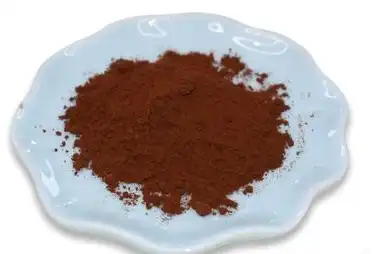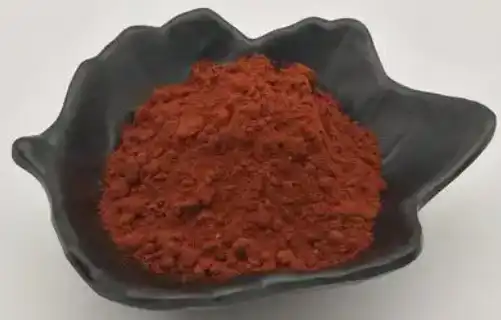What Is Astaxanthin Powder Made Of?
Astaxanthin powder has gained significant attention in the health and wellness industry due to its potent antioxidant properties and potential health benefits. But have you ever wondered what exactly goes into making this vibrant red powder? In this comprehensive guide, we'll explore the raw sources, composition, and formulation process of astaxanthin powder, shedding light on its natural and synthetic origins.
What raw sources are used in Astaxanthin Powder?
Astaxanthin powder is derived from various sources, both natural and synthetic. The primary natural sources include:
- Microalgae: Haematococcus pluvialis is the most abundant natural source of astaxanthin. This microalgae species can accumulate up to 5% of its dry weight in astaxanthin under stress conditions.
- Yeast: Certain species of yeast, such as Xanthophyllomyces dendrorhous (formerly known as Phaffia rhodozyma), can produce astaxanthin as a secondary metabolite.
- Marine animals: Astaxanthin is found in various marine creatures, including salmon, trout, shrimp, and krill. However, these sources are not typically used for commercial astaxanthin powder production due to sustainability concerns and lower astaxanthin concentrations.
The extraction process for natural astaxanthin involves several steps:
- Cultivation: Microalgae or yeast are grown in controlled environments to optimize astaxanthin production.

- Harvesting: The biomass is collected and concentrated.
- Cell disruption: The cell walls are broken down to release the astaxanthin.
- Extraction: Supercritical CO2 extraction or solvent extraction methods are used to isolate the astaxanthin.
- Purification: The extract is further refined to increase astaxanthin concentration.
- Drying: The purified extract is dried to create a powder form.
Synthetic astaxanthin, on the other hand, is produced through chemical synthesis using petrochemical sources. While it has a similar molecular structure to natural astaxanthin, there are some differences in its stereochemistry and bioavailability.
Composition: algae, yeast, or synthetic origin
The composition of astaxanthin powder can vary depending on its origin:
Algae-derived astaxanthin
Astaxanthin from Haematococcus pluvialis is considered the gold standard for natural astaxanthin. Its composition includes:
- Astaxanthin (typically 5-7% of the total extract)
- Other carotenoids (β-carotene, lutein, canthaxanthin)
- Fatty acids (palmitic, oleic, and linoleic acids)
- Proteins and carbohydrates
Algal astaxanthin is predominantly found in the esterified form, which is believed to enhance its stability and bioavailability.
Yeast-derived astaxanthin
Astaxanthin produced by Xanthophyllomyces dendrorhous has a slightly different profile:
- Astaxanthin (concentration varies depending on strain and cultivation conditions)
- Other carotenoids (β-carotene, torulene)
- Ergosterol (a precursor to vitamin D2)
- Proteins and nucleic acids
Yeast-derived astaxanthin is typically found in the free (non-esterified) form.
Synthetic astaxanthin
Synthetic astaxanthin powder consists of:
- Pure astaxanthin (usually >95% purity)
- Stabilizers and antioxidants (e.g., tocopherols)
Unlike natural sources, synthetic astaxanthin lacks the supporting compounds found in algae or yeast extracts. It also differs in its stereochemistry, containing a mixture of stereoisomers not found in nature.
How are carriers and fillers selected for powder stability?
The stability of astaxanthin powder is crucial for maintaining its potency and shelf life. Carriers and fillers play a significant role in enhancing stability, improving flowability, and facilitating standardization. Here's how these components are selected:
Carriers
Carriers are substances used to dilute the concentrated astaxanthin extract and improve its handling properties. Common carriers include:
- Maltodextrin: A polysaccharide derived from corn, potato, or wheat starch. It's widely used due to its neutral taste and good solubility.
- Rice flour: A gluten-free option that provides a smooth texture and acts as a natural preservative.
- Microcrystalline cellulose: A refined wood pulp derivative that enhances flowability and compressibility.
The choice of carrier depends on factors such as the desired final concentration of astaxanthin, the intended application (e.g., capsules, tablets, or bulk powder), and any specific dietary requirements (e.g., gluten-free, non-GMO).
Fillers
Fillers are added to improve the powder's physical properties and ensure uniformity. Common fillers include:
- Silicon dioxide: Also known as silica, it's used as an anti-caking agent to prevent clumping and improve flow.
- Tricalcium phosphate: This mineral compound can act as both a filler and a source of calcium.
- Magnesium stearate: A flow agent that reduces friction during processing and prevents ingredients from sticking to equipment.
Stabilizers and antioxidants
To protect astaxanthin from degradation, various stabilizers and antioxidants may be added:
- Tocopherols (vitamin E): Natural antioxidants that help prevent oxidation of astaxanthin.
- Ascorbyl palmitate: A fat-soluble form of vitamin C that acts as an antioxidant synergist.
- Rosemary extract: A natural antioxidant that can enhance stability and shelf life.
Encapsulation technologies
Advanced formulation techniques may be employed to further enhance stability:
- Microencapsulation: Astaxanthin is enclosed in tiny capsules made from materials like gelatin or plant-based alternatives.
- Liposomal encapsulation: Astaxanthin is encapsulated within lipid bilayers, potentially improving bioavailability.
- Cyclodextrin complexation: Astaxanthin molecules are trapped within cyclodextrin rings, enhancing solubility and stability.
The selection of carriers, fillers, and stabilizers is a meticulous process that considers factors such as:
- Compatibility with astaxanthin
- Stability under various storage conditions
- Regulatory compliance (e.g., GRAS status, allergen-free)
- Impact on bioavailability
- Cost-effectiveness
- Consumer preferences (e.g., natural vs. synthetic additives)
By carefully selecting these components, Angelbio can create astaxanthin powder formulations that maintain potency, ensure consistency, and meet the diverse needs of consumers and product developers.
Quality control and standardization
To ensure the consistency and efficacy of astaxanthin powder, rigorous quality control measures are implemented:
- Analytical testing: HPLC (High-Performance Liquid Chromatography) is used to quantify astaxanthin content and identify potential impurities.
- Stability testing: Accelerated and long-term stability studies are conducted to determine shelf life under various conditions.
- Microbial testing: Ensures the powder meets safety standards for microbial contamination.
- Particle size analysis: Confirms uniformity and proper dispersion of the powder.
Standardization is crucial for maintaining consistent potency across batches. This involves:
- Adjusting the concentration of astaxanthin to meet specified levels (e.g., 5%, 10%, or 20% astaxanthin content)
- Blending different batches to achieve target specifications
- Implementing rigorous documentation and traceability systems
Environmental considerations
As sustainability becomes increasingly important, Angelbio are exploring ways to make astaxanthin powder production more environmentally friendly:
- Optimizing algae cultivation to reduce water and energy consumption
- Implementing closed-loop systems to recycle nutrients and minimize waste
- Exploring alternative extraction methods that reduce solvent use
- Utilizing renewable energy sources in production facilities
Future developments
The field of astaxanthin powder production is continually evolving. Some areas of ongoing research and development include:
- Genetic engineering of algae and yeast strains to increase astaxanthin yield
- Novel extraction techniques that improve efficiency and reduce environmental impact
- Advanced formulation technologies to enhance bioavailability and targeted delivery
- Exploration of new natural sources of astaxanthin
As our understanding of astaxanthin's benefits grows, we can expect to see continued innovation in the production and formulation of astaxanthin powder, leading to more effective and sustainable products.
Conclusion
Astaxanthin powder is a complex product that combines the potent antioxidant properties of astaxanthin with carefully selected carriers, fillers, and stabilizers. Whether derived from algae, yeast, or synthetic sources, the production of high-quality astaxanthin powder requires expertise in extraction, formulation, and quality control.
As consumers become more health-conscious and demand natural, sustainable products, the importance of understanding what goes into astaxanthin powder continues to grow. By choosing reputable manufacturer Angelbio who prioritize quality and transparency, you can ensure that you're getting the most benefit from this powerful carotenoid.
If you're looking for premium astaxanthin powder for your health supplements, cosmetics, or nutraceutical products, look no further than Angelbio. As an innovative enterprise dedicated to the R&D, production, and sales of natural ingredients, we offer high-end, high-quality astaxanthin powder that meets the most stringent international quality standards. Our focus on technology innovation and supply chain integration ensures that you receive products that are not only effective but also aligned with the principles of natural origin and global health.
Ready to elevate your products with our superior astaxanthin powder? Contact us today at angel@angelbiology.com to learn more about our offerings and how we can support your business needs. Let Angelbio be your partner in delivering health and wellness solutions that make a difference.
References
1. Johnson, E. A., & An, G. H. (1991). Astaxanthin from microbial sources. Critical Reviews in Biotechnology, 11(4), 297-326.
2. Higuera-Ciapara, I., Félix-Valenzuela, L., & Goycoolea, F. M. (2006). Astaxanthin: a review of its chemistry and applications. Critical Reviews in Food Science and Nutrition, 46(2), 185-196.
3. Ambati, R. R., Phang, S. M., Ravi, S., & Aswathanarayana, R. G. (2014). Astaxanthin: sources, extraction, stability, biological activities and its commercial applications—a review. Marine Drugs, 12(1), 128-152.
4. Shah, M. M., Liang, Y., Cheng, J. J., & Daroch, M. (2016). Astaxanthin-producing green microalga Haematococcus pluvialis: from single cell to high value commercial products. Frontiers in Plant Science, 7, 531.


